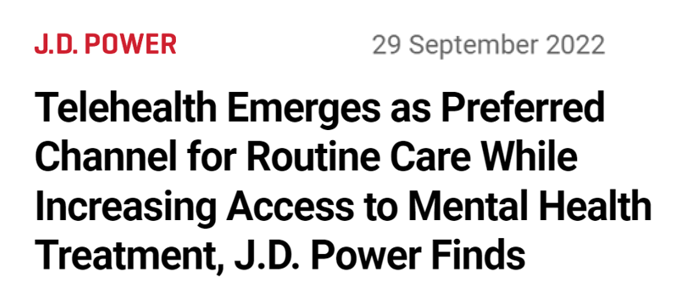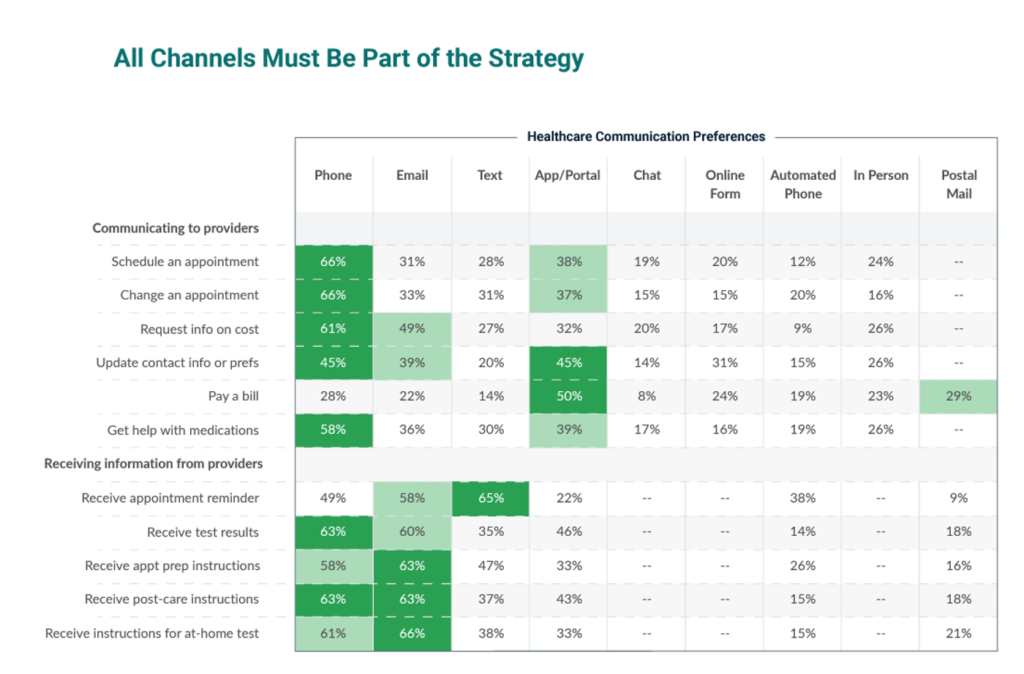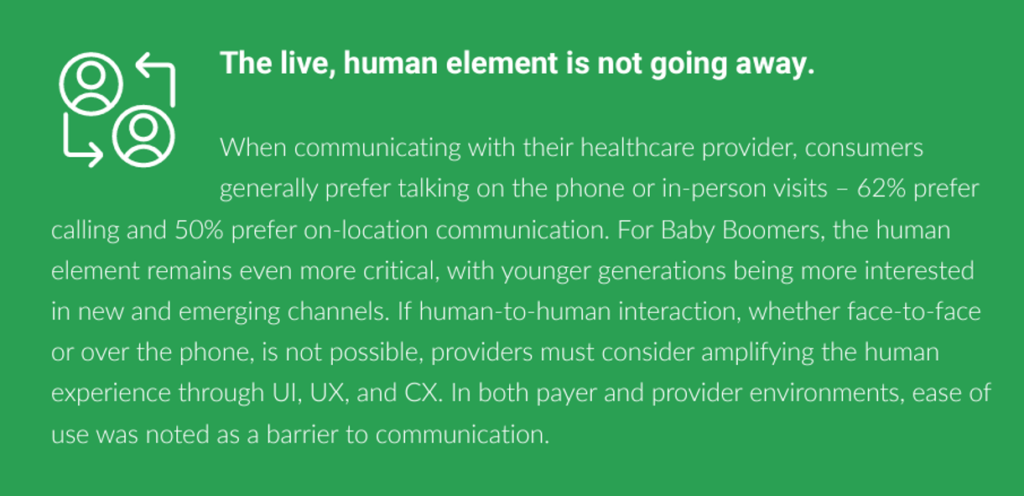Telehealth has increased access to mental health services, I’ve highlighted this Mental Illness Awareness Week here in Health Populi.
But telehealth has also emerged as a preferred channel for routine health care services, we learn from J.D. Power’s 2022 Telehealth Satisfaction Study.

Among people who had used virtual care in the past year, telehealth-as-healthcare is now part of mainstream Americans’ expectations as a normal part of their medical care.
That’s because 9 in 10 users of telehealth in the U.S. would use virtual care to receive medical services in the future, J.D. Power found in their Study which was conducted among 4,306 health care consumers who had used a telehealth service in the 12 months preceding June and July 2022 when the survey was fielded.
Underneath the mass acceptance of telehealth among those who have experienced it, J.D. Power points out several granular perspectives to keep in mind as we design and implement omnichannel health care services:
- Two-thirds of U.S. consumers has accessed video telehealth services in the 12 months from June-July 2021.
- “Patients really like telehealth,” J.D. Power — which studies customer satisfaction for living — asserts.
- Telehealth is the preferred “channel” for routine care, with 80% of consumers preferring for prescription refills and 71% preferring for discussing teste results
- 57% of consumers prefer telehealth for ongoing mental health visits; and,
- Convenience and waiting times (less!) are peoples’ top reasons for using telehealth.
Consumers rank telehealth higher for patient satisfaction when they perceive clinicians spend sufficient time for quality care and when they provide clear and complete explanations to their medical issues.
J.D. Power published two customer satisfaction assessments of telehealth providers for Direct-to-Consumer services and those delivered by health insurance plans.
- For DTC telehealth, LiveHealth Online ranked #1 with an Index score of 869, followed by Doctor on Demand, eVisit, MyTelemedicine, and Teladoc all ranking above the average Index score among DTCs of 843. CVS Health and Walgreens ranked last at 825 and 822 Indices.
- For health plan-provided telehealth, Humana topped the list, followed by Aetna in second place. The segment average was 852 and the Index scores were fairly close across all plans, with Kaiser Foundation Health Plan ranking last at 835 out of 1000.
Christopher Lis, managing director of the company’s global healthcare intelligence team, noted that, “As technology adoption and consumer demand continues to increase, it will be important to keep evaluating what’s working well….with the aim being to improve equitable access, quality of care and patient outcomes that complement in-person care.”

Health Populi’s Hot Points: “Complementing in-person care,” as Christopher Lis coins it, translates to the curation and construction of omni-channel health care services.
We are talking about omni-channel delivery, which integrates across communications channels based on patients’ preferences.
Here, I share research from Avtex’s Omnichannel Healthcare Report which illustrates this point: that “all channels must be part” of healthcare’s strategy going forward.
Consider how consumers have expanded their engagements (plural!) with retailers, via contactless experiences, curbside pickups, BOPIS (buy online, pick up inside store), and good old-fashioned brick-and-mortar physical shopping in stores. [to that point, I noted with interest this week’s Wall Street Journal article on the re-birth of commercial retail real estate markets in the U.S.].

We conclude by returning to the word “complement.”
“The live, human element is not going away,” Avtex calls out, explained by the last graphic shown here from the omnichannel report.
Our clinicians — nurses, physicians and pharmacists — continue to be the most-trusted honest and ethical professions in the overall U.S. economy, not just in the health care economy. We must continue to buoy and support these precious human resources as we also attend to re-imagining and extending virtual health care across channels.




 Thank you FeedSpot for
Thank you FeedSpot for